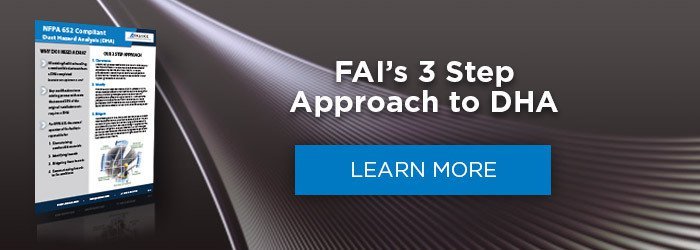By Zachary Hachmeister, Chief Operating Officer, Fauske & Associates, LLC
 Combustible Dust is Fuel
Combustible Dust is Fuel
这可能听起来很明显,但这真的很重要。You need to think of dust deposits on surfaces or dust leakage from equipment as uncontrolled fuel in your facility. This, of course, is only true for dusts that are combustible. The reason this is so important is that it will help shift you and your employees’ perspective on dust from a nuisance that reflects a lack of cleanliness to a potential hazard that is putting you, your co-workers, and your assets at risk. (This slight shift in perspective can translate to an increased awareness of combustible dust hazards and by doing so, can help you identify where dust is escaping from your process into your facility for bettercombustible dust control.)
保持干净
如果汽油溢出,则会立即危害。易燃蒸气迅速散布在整个区域,如果它们与点火源接触,则可能会发生爆炸或闪火。如果没有点火源,则燃料会蒸发,易燃气氛消散,直到危险不再存在为止。固体燃料(例如可燃灰尘)有所不同,因为它们需要物理去除。希望这是通过安全清洁实践来实现的。但是,如果不触及,材料将容易受到其他可能导致灾难性爆炸的分散手段的影响。
Take Control at Transfer Points
The dust that has escaped the confines of your process, a.k.a. fugitive dust, typically originates from unconfined dust generating operations that are not properly ventilated. Transfer points in particular are susceptible as many processes use a series of conveyors, screws, and hoppers to move material from one part of the process to another. Often there is a short distance of free fall where the material is suspended as it changes elevation. Cutting and grinding operations are a couple of other common sources that come to mind as well. Enclosing, or partially enclosing and providing industrial ventilation for these dust generating operations can greatly reduce the amount of fugitive dust in your facility. Though the equipment comes at a price, a cost savings can also be recognized from the reduction in man hours needed for housekeeping activities.
Contain and Mitigate
Taking control of dust that is escaping your process through proper industrial ventilation design and employing good housekeeping measures to keep your facility clean can greatly reduce the risk of a catastrophic dust explosion that could compromise your entire facility. However, now that dust is contained to the system, proper mitigation of explosion hazards for these systems is imperative. Installing explosion protection equipment such as explosion relief venting, suppression, and/or isolation on equipment that handles combustible dust will further reduce the risk of injury or loss of assets. An example of typical equipment to focus mitigation efforts on includes dust collectors, cyclones, silos and spray dyers. The need for protection of industrial equipment is determined through the presence of sufficient quantities or dust, credible ignition sources, and credible dispersion mechanisms.
The Onus is on You
NFPA 652关于可燃灰尘基本面的标准专门指出,所有者/操作员负责表征其设施中可燃材料,从而识别与这些材料相关的可燃粉尘危害,减轻已识别的危害,并将这些危害传达给劳动力。尽管NFPA不是执法机构,但OSHA,消防元帅,建筑检查员和保险承销商确实执行了NFPA标准。
因此,从安全角度来看,遵守NFPA不仅有意义 - 这些理事机构可以期望。材料的表征是确定您是否有可燃灰尘的第一步。这可以通过创建粉末状材料的清单和识别可燃且不属于的材料来实现。对您的材料的文献搜索可用于识别已知的可燃物。
However, your most concrete evidence of combustible versus non-combustible will be generated through laboratory experiments conducted on representative samples of your materials.
可以使用每NFPA 652进行灰尘危害分析(DHA),以识别设施中存在的可燃灰尘危害。本质上,DHA是对处理或包含可燃灰尘的每件设备和建筑物的有记录的系统评估,以识别这些危害的存在。适当的DHA将审查用于管理这些危害的当前行政和工程控制,并提供建议缓解不安全条件。通过单击下面的图像来查看FAI对DHA的三个步骤方法。











